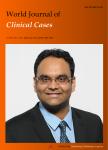Intensive care unit-acquired weakness and mechanical ventilation:A reciprocal relationship
作者机构:Department of Community MedicinePatna Medical CollegeBiharPatna 800004India Department of Ophthalmology-Vitreo-RetinaNeuro-Ophthalmology and OculoplastyAll India Institute of Medical SciencesBiharPatna 801507India Department of OphthalmologyESIC Medical CollegeBiharPatna 801113India Department of OphthalmologyAll India Institute of Medical SciencesTelanganaHyderabad 508126India
出 版 物:《World Journal of Clinical Cases》 (世界临床病例杂志)
年 卷 期:2024年第12卷第18期
页 面:3644-3647页
学科分类:100218[医学-急诊医学] 1002[医学-临床医学] 1010[医学-医学技术(可授医学、理学学位)] 10[医学]
主 题:Critical illness Meta-analysis Morbidity Myopathy Polyneuropathy Risk factors
摘 要:Intensive care unit-acquired weakness(ICU-AW;ICD-10 Code:G72.81)is a syndrome of generalized weakness described as clinically detectable weakness in critically ill patients with no other credible *** risk factors for ICU-AW include hyperglycemia,parenteral nutrition,vasoactive drugs,neuromuscular blocking agents,corticosteroids,sedatives,some antibiotics,immobilization,the disease severity,septicemia and systemic inflammatory response syndrome,multiorgan failure,prolonged mechanical ventilation(MV),high lactate levels,older age,female sex,and pre-existing systemic *** is a definite association between the duration of ICU stay and MV with ***,the interpretation that these are modifiable risk factors influencing ICU-AW,appears to be flawed,because the relationship between longer ICU stays and MV with ICU-AW is reciprocal and cannot yield clinically meaningful strategies for the prevention of *** strategies must be based on other risk *** multicentric randomized controlled trials as well as meta-analysis of such studies can be a more useful approach towards determining the influence of these risk factors on the occurrence of ICU-AW in different populations.



